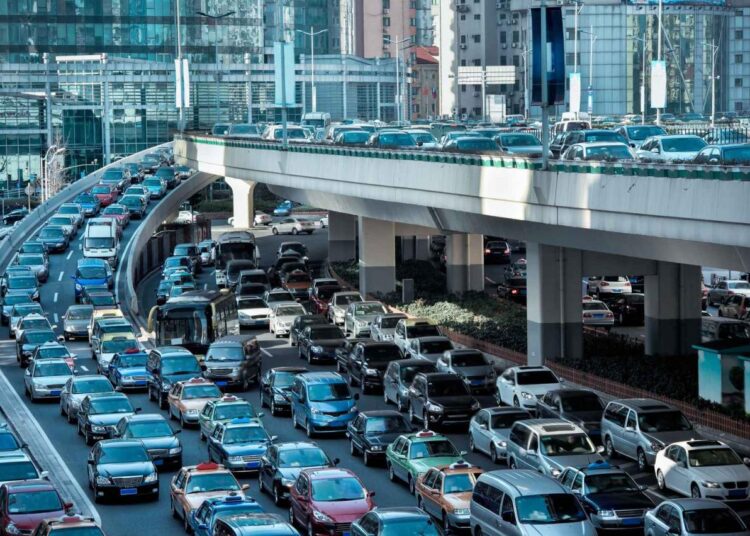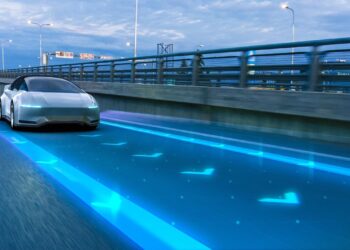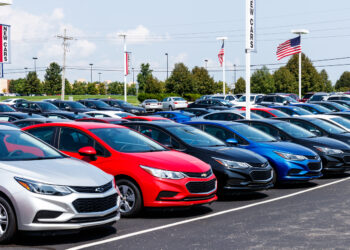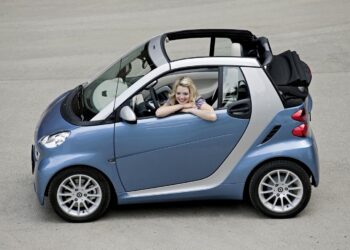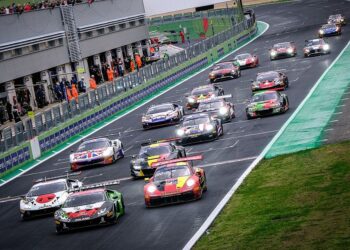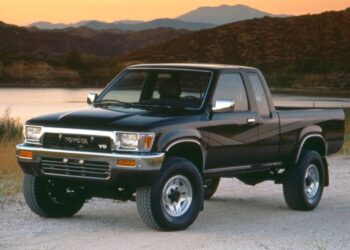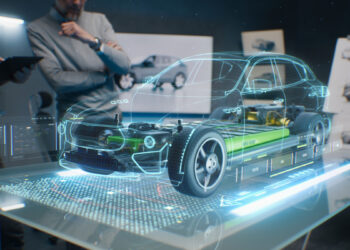Our cities are constantly evolving, and at the heart of this evolution is the fundamental way people move within them. For decades, urban mobility has been largely defined by private car ownership and a fixed public transit system. However, a seismic shift is underway, propelled by technological innovation, environmental urgency, and changing lifestyles. This isn’t just about tweaking existing infrastructure; it’s a profound urban mobility transformation, rethinking how people, goods, and services flow through our metropolitan areas. This shift aims to create cities that are cleaner, more efficient, more accessible, and ultimately, more livable, signaling a future where mobility is intelligent, integrated, and sustainable.
Why Urban Mobility Needs a Revolution
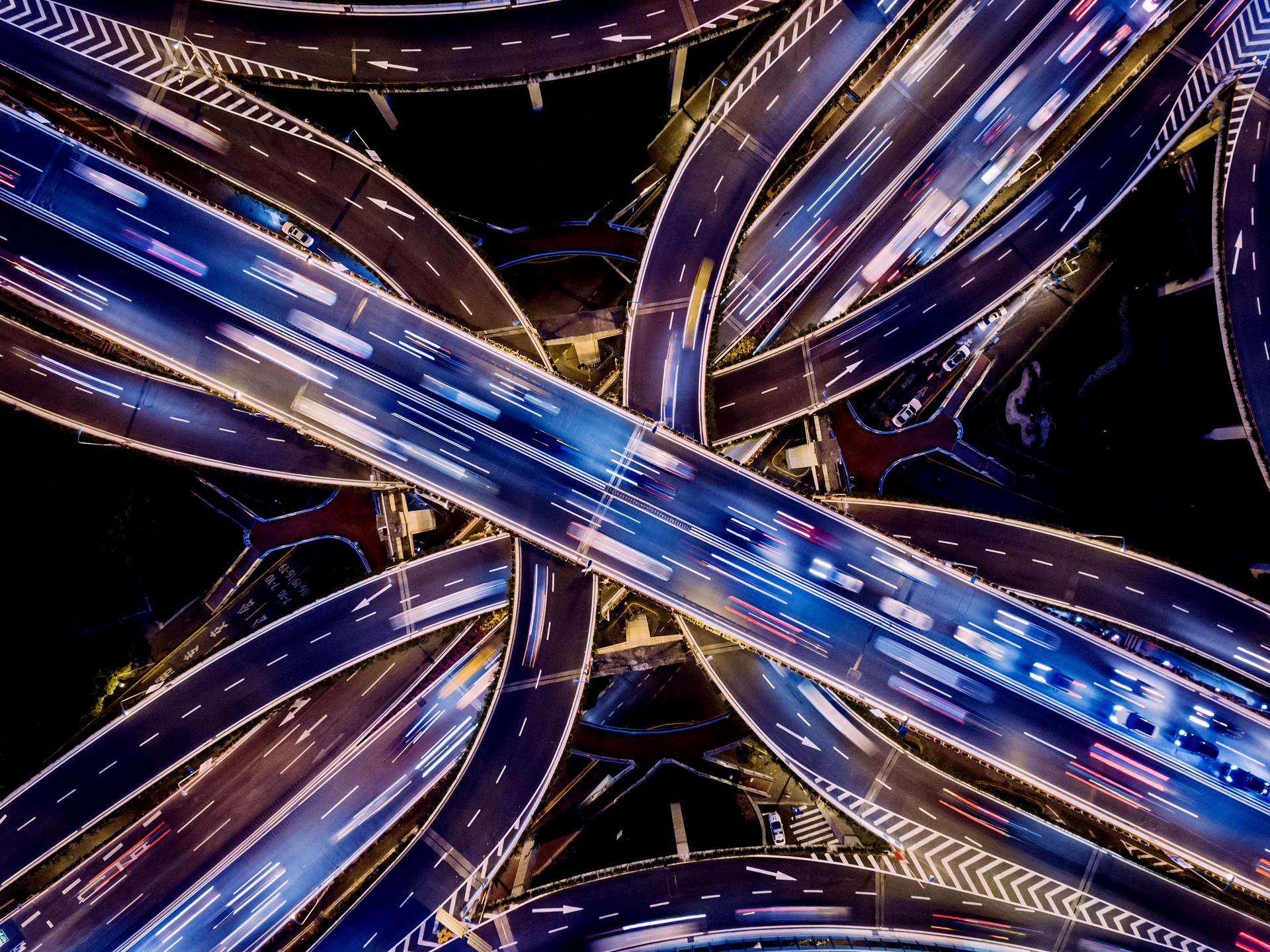
The conventional approaches to urban transportation are increasingly inadequate for the challenges faced by modern cities. Several critical factors necessitate this profound transformation.
A. Alarming Levels of Congestion
Traffic jams are a ubiquitous nightmare in cities worldwide, leading to a cascade of negative consequences.
- Lost Productivity and Time: Commuters spend countless hours stuck in traffic, leading to significant economic losses and reduced quality of life. For businesses, delayed deliveries and inefficient logistics directly impact profitability.
- Increased Fuel Consumption and Emissions: Stop-and-go traffic significantly increases fuel consumption for internal combustion engine (ICE) vehicles, leading to higher operating costs and greater emissions of greenhouse gases and harmful pollutants.
- Mental Health Impact: The stress and frustration of prolonged commutes contribute to increased anxiety and reduced overall well-being for urban dwellers.
- Economic Bottlenecks: Congestion hinders the efficient movement of goods and services, impacting supply chains and the overall economic vitality of a city.
- Inefficient Infrastructure Use: Roads and highways designed for continuous flow become choked, rendering massive infrastructure investments less effective.
Addressing congestion is a primary driver for seeking innovative urban mobility solutions.
B. Environmental Degradation and Climate Change
The environmental footprint of urban transportation is a critical global concern.
- Air Pollution Crisis: Vehicle exhaust is a major source of particulate matter (), nitrogen oxides (), and volatile organic compounds (VOCs). These pollutants contribute to smog, acid rain, and severe respiratory and cardiovascular diseases for city residents.
- Greenhouse Gas Emissions: The burning of fossil fuels in vehicles is a significant contributor to carbon dioxide () and other greenhouse gases, accelerating global climate change and its associated extreme weather events.
- Noise Pollution: The constant hum and roar of traditional traffic contribute to noise pollution, impacting public health, wildlife, and the overall tranquility of urban environments.
- Resource Depletion: Reliance on finite fossil fuels is unsustainable in the long term, pushing for renewable energy sources and more efficient modes of transport.
- Waste Generation: The lifecycle of vehicles, from manufacturing to disposal, creates significant waste and demands substantial resources, challenging the concept of a linear economy.
Urban mobility transformation is crucial for creating healthier, more sustainable cities and mitigating climate change impacts.
C. Inadequate Accessibility and Equity Gaps
Traditional transportation systems often fail to serve all segments of the urban population equitably, creating disparities in access to opportunities.
- “Last Mile” Challenges: Public transit often struggles with the “last mile” problem, where commuters face difficulties covering the final short distance from a transit stop to their destination.
- Exclusion of Vulnerable Groups: Limited public transport options, lack of accessible infrastructure, or the high cost of private car ownership can exclude the elderly, people with disabilities, and low-income individuals from essential services, jobs, and social activities.
- Geographic Disparities: Public transport networks often prioritize densely populated areas, leaving residents in suburban or peripheral areas underserved.
- Safety Concerns: Inadequate pedestrian infrastructure or unsafe cycling routes deter active mobility, especially for vulnerable road users.
- Affordability Barriers: The cost of fuel, maintenance, and parking for private cars, or even public transport fares, can be a significant burden for many urban residents.
Future mobility solutions aim to create a more inclusive and accessible urban environment for everyone.
D. Digital Transformation and Consumer Expectations
The rapid evolution of technology and changing consumer behaviors are fundamentally reshaping demand for mobility services.
- On-Demand Economy: The prevalence of app-based services has created an expectation for instant, personalized, and flexible solutions, influencing how people want to access transportation.
- Smartphone Ubiquity: Nearly everyone carries a smartphone, making app-based booking, payment, and real-time information readily accessible for mobility services.
- Data-Driven Decisions: The ability to collect, analyze, and leverage vast amounts of real-time data allows for optimized routing, predictive services, and dynamic adjustments to mobility offerings.
- Environmental Consciousness: A growing segment of the population prioritizes sustainable choices, influencing their transport mode decisions.
- Multimodality Acceptance: Consumers are increasingly comfortable combining different modes of transport for a single journey (e.g., e-scooter to train to ride-share).
- Personalization: The desire for tailored experiences, from preferred routes to in-vehicle entertainment and comfort settings.
These technological and behavioral shifts create both challenges and immense opportunities for new mobility models.
Core Pillars of the Urban Mobility Revolution
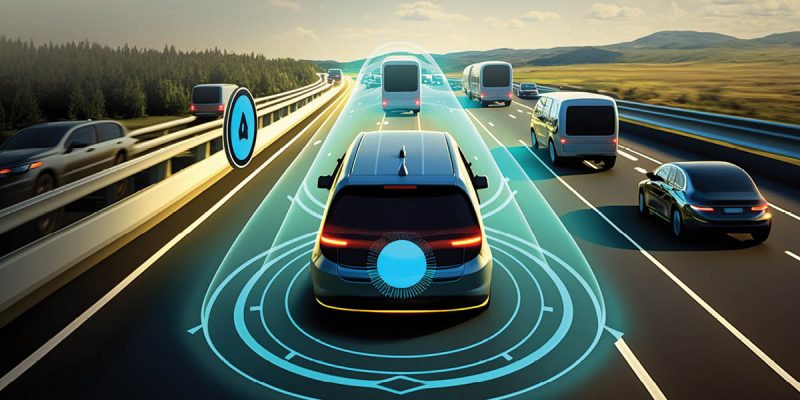
The transformation of urban mobility is not a single solution but a comprehensive ecosystem of interconnected innovations and strategies.
A. Integrated Mobility-as-a-Service (MaaS)
MaaS is a paradigm shift from personally-owned modes of transportation to consuming mobility as a service, integrating various forms of transport into a single, seamless digital platform.
- Single Platform for Planning and Payment: Users can plan, book, and pay for journeys that combine public transport (buses, trains, subways), ride-sharing (Uber, Grab), car-sharing, bike-sharing, e-scooters, and even taxi services through one intuitive app.
- Personalized Routing and Recommendations: Algorithms suggest the most efficient, cost-effective, or sustainable routes based on user preferences, real-time traffic conditions, and available transport options.
- Subscription Models: Offering monthly or annual subscriptions that bundle different mobility services, providing cost predictability and greater convenience, similar to streaming services.
- Reduced Private Car Ownership: By offering convenient, flexible, and affordable alternatives, MaaS can significantly decrease the need for individuals to own private vehicles, freeing up urban space and reducing congestion.
- Optimized Resource Utilization: MaaS platforms can efficiently allocate available transport modes, reducing idle time for shared vehicles and improving the overall utilization rates of public transport.
- Data-Driven Urban Planning: The aggregated data from MaaS platforms provides invaluable insights for city planners to understand mobility patterns, identify bottlenecks, and make informed infrastructure investment decisions.
MaaS is critical for making multi-modal travel intuitive and appealing, encouraging a shift away from private car dependency.
B. Electrification of Transport Modes
Transitioning to electric powertrains across all forms of urban transport is fundamental for tackling air pollution and climate change.
- Electric Vehicles (EVs): Widespread adoption of electric cars, from personal vehicles to ride-sharing fleets, eliminates tailpipe emissions at the point of use, drastically improving urban air quality. Battery technology breakthroughs are continuously enhancing range and charging speed.
- Electric Buses: Replacing diesel buses with electric versions dramatically reduces emissions and noise pollution in public transit networks. Many cities are rapidly expanding their electric bus fleets.
- Electric Micro-Mobility: E-scooters and e-bikes offer zero-emission alternatives for short-distance travel, contributing to cleaner urban environments.
- Electric Commercial Vehicles: Electric delivery vans and trucks are emerging as viable options for urban logistics, reducing emissions from freight movement in city centers.
- Charging Infrastructure: Extensive deployment of public and private charging stations, including rapid chargers and smart charging solutions, is essential to support the electric transition.
- Grid Integration and V2G (Vehicle-to-Grid): EVs can eventually become mobile energy storage units, feeding power back to the grid during peak demand, enhancing grid stability and accelerating renewable energy adoption.
Electrification makes urban environments healthier, quieter, and more sustainable.
C. Autonomous Vehicles (AVs) and Smart Logistics
Self-driving technology promises to revolutionize safety, efficiency, and how goods move within cities.
- Autonomous Public Shuttles: Self-driving shuttles operating on fixed routes or in geo-fenced areas can enhance public transit accessibility, particularly for last-mile connections or in underserved areas, often with lower operational costs.
- Robotaxis and Ride-Sharing Fleets: Autonomous ride-sharing services can offer 24/7 on-demand transportation at potentially lower costs than human-driven services, reducing private car ownership.
- Autonomous Delivery Vehicles: Self-driving vans, robots, and drones can revolutionize urban logistics, making deliveries more efficient, faster, and potentially reducing traffic congestion caused by delivery vehicles.
- Enhanced Safety: Autonomous systems, free from human error, distraction, or impairment, have the potential to significantly reduce road accidents, making streets safer for all users.
- Optimized Traffic Management: Autonomous vehicles, communicating with each other and smart infrastructure, can drive more efficiently, leading to smoother traffic flow, reduced congestion, and optimized speed.
- Intelligent Parking: AVs can autonomously find and park themselves, and even re-park when needed, reducing the demand for prime urban parking spaces.
While full Level 5 autonomy is still some way off, limited deployments in specific urban zones are already showing significant promise.
D. Micro-Mobility Solutions
These lightweight, often electric-powered vehicles are ideal for short urban distances, bridging crucial gaps in the transportation network.
- Electric Scooters (e-scooters): Providing a fast, flexible, and fun way to cover short distances, especially for the “last mile” from public transit hubs.
- Electric Bicycles (e-bikes): Extending the range and reducing the effort of cycling, making it a viable commuting option for more people, including those with longer distances or hilly terrain.
- Shared Fleets: Dockless or dock-based rental systems make these options readily available on-demand throughout cities.
- Reduced Congestion and Emissions: By offering an alternative to cars for short trips, micro-mobility helps alleviate traffic and reduce local emissions.
- Health Benefits: Encourages active lifestyles, even with electric assist, promoting physical activity compared to passive vehicle use.
- Complementary to Public Transit: Seamlessly connecting public transit stops to final destinations, enhancing the overall usability of mass transit.
Micro-mobility has become a vibrant and essential component of modern urban mobility.
E. Smart Infrastructure and Data Analytics
Leveraging technology to make urban transportation networks intelligent and responsive.
- Connected Traffic Management Systems: Adaptive traffic lights that use real-time data from sensors and connected vehicles to optimize flow and reduce idling.
- Real-Time Data Collection: Sensors embedded in roads, cameras, and data from connected vehicles collect vast amounts of information on traffic patterns, road conditions, and parking availability.
- Predictive Analytics: AI and machine learning analyze historical and real-time data to predict congestion, optimize routes, and anticipate demand for mobility services.
- Vehicle-to-Infrastructure (V2I) Communication: Allows vehicles to communicate with smart infrastructure for traffic updates, hazard warnings, and navigation optimization.
- Digital Twins of Cities: Creating virtual models of urban environments to simulate different mobility scenarios, test new solutions, and optimize urban planning.
- Smart Parking Solutions: Sensors in parking spaces and connected apps guide drivers to available spots, reducing cruising for parking and related congestion.
Smart infrastructure is the nervous system that enables efficient and adaptive urban mobility.
The Broader Impact for Urban Life
The urban mobility transformation extends far beyond just transportation, fundamentally reshaping cities, economies, and societies.
A. More Livable and Healthier Cities
The most immediate and tangible impact is on the quality of urban life.
- Cleaner Air: Reduced emissions from electric vehicles and less congestion directly translate to better air quality, lowering respiratory and cardiovascular disease rates.
- Quieter Environments: Electric vehicles and optimized traffic flow significantly reduce urban noise pollution, leading to less stress and better public health.
- Increased Green Spaces: As private car ownership declines and parking demand lessens, urban land can be repurposed for parks, pedestrian zones, bicycle lanes, and community spaces.
- Enhanced Public Spaces: Streets can be redesigned to be more pedestrian-friendly, with wider sidewalks, outdoor cafes, and less dominance of car infrastructure.
- Promoted Active Lifestyles: Improved walking and cycling infrastructure encourages physical activity, leading to better public health outcomes.
Cities will become more people-centric, vibrant, and enjoyable places to live.
B. Economic Opportunities and Innovation
The shift in urban mobility is a powerful economic engine, fostering new industries and job creation.
- Growth of New Industries: Emergence of companies specializing in EV charging infrastructure, battery manufacturing, MaaS platforms, micro-mobility services, and autonomous vehicle technology.
- Job Creation: While some traditional jobs (e.g., taxi drivers, bus drivers) may evolve, new jobs will be created in software development, AI engineering, data analytics, fleet management, infrastructure maintenance, and green manufacturing.
- Reduced Economic Losses from Congestion: More efficient traffic flow leads to increased productivity for businesses and commuters.
- New Revenue Streams for Cities: Potential for smart parking, charging services, and data-driven urban services.
- Investment in R&D: Massive ongoing investment in cutting-edge technologies to drive further innovation in mobility solutions.
- Reduced Dependency on Fossil Fuels: Shifting to electric mobility contributes to energy independence and reduces vulnerability to volatile global oil markets.
This transformation represents a significant economic opportunity for cities and nations.
C. Enhanced Social Equity and Accessibility
Future mobility models have the potential to create fairer, more inclusive societies.
- Greater Independence for All: Providing reliable and affordable transportation options for the elderly, individuals with disabilities, and those in low-income households, ensuring access to employment, education, healthcare, and social activities.
- Reduced Transportation Costs: For many, the shift from private car ownership to shared and on-demand mobility services can significantly reduce household transportation expenses.
- Access to Underserved Areas: Flexible, on-demand services can extend mobility options to neighborhoods and peripheral areas not well-served by traditional fixed-route public transit.
- Safer Streets: Reduced accidents due to autonomous technology and better traffic management will make roads safer for all users, including pedestrians and cyclists.
- Improved Quality of Life: Less time spent commuting, reduced stress, and more accessible services contribute to overall well-being.
Urban mobility transformation is a powerful tool for fostering social inclusion and equitable access to opportunities.
D. Reshaping Urban Planning and Infrastructure
The planning and development of cities will be profoundly impacted by new mobility paradigms.
- Reclaiming Space: Less demand for vast parking lots and multi-lane roads allows urban planners to reallocate space for housing, commercial development, green infrastructure, or public amenities.
- Focus on Multimodal Hubs: Designing integrated mobility hubs where different transport modes seamlessly connect, facilitating transfers and encouraging multi-modal journeys.
- Smart Infrastructure Investment: Prioritizing investments in EV charging networks, 5G connectivity for V2X, smart traffic lights, and digital signage.
- Pedestrian and Cyclist Prioritization: Re-designing streets to be more walkable and bikeable, with dedicated lanes and safer crossings.
- Data-Driven Decisions: Urban planners will increasingly rely on real-time mobility data to make informed decisions about infrastructure development, zoning, and service provision.
- Resilient Infrastructure: Designing infrastructure that is adaptable to future technological changes and resilient to climate impacts.
The future city will be designed with intelligent, integrated mobility at its core, creating more efficient and enjoyable urban environments.
Conclusion
The urban mobility transformation is not merely an aspiration; it’s a rapidly unfolding reality, reshaping the very fabric of our cities. Driven by the urgent need to combat congestion and pollution, and empowered by breakthroughs in electrification, autonomous driving, digital connectivity, and shared services, our urban areas are moving towards a future that is cleaner, more efficient, and profoundly more livable. While the journey involves navigating complex challenges in policy, infrastructure, and public acceptance, the collective commitment from governments, industries, and communities worldwide is undeniable. The vision of a smart, sustainable, and inclusive urban ecosystem, where mobility is seamless, accessible, and environmentally responsible, is no longer a distant dream. It is the compelling horizon towards which our cities are now rapidly accelerating, redefining what it means to move in the modern world.

